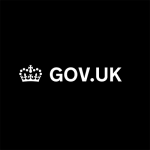National Threat Level
| Date | Threat Level |
|---|---|
| 9 February 2022 | SUBSTANTIAL |
| 15 November 2021 | SEVERE |
| 4 February 2021 | SUBSTANTIAL |
| 3 November 2020 | SEVERE |
| 4 November 2019 | SUBSTANTIAL |
| 23 July 2019 | SEVERE |
Northern Irish Related Terrorism in Northern Ireland Threat Level
| Date | Threat Level |
|---|---|
| 22 March 2022 | SUBSTANTIAL |
| 23 July 2019 | SEVERE |
Threat levels prior to July 2019
| Date | Threat from international terrorism | Threat from Northern Ireland-related terrorism | |
|---|---|---|---|
| in Northern Ireland | in Great Britain | ||
| 1 March 2018 | SEVERE | SEVERE | MODERATE |
| 17 September 2017 | SEVERE | SEVERE | SUBSTANTIAL |
| 15 September 2017 | CRITICAL | SEVERE | SUBSTANTIAL |
| 27 May 2017 | SEVERE | SEVERE | SUBSTANTIAL |
| 23 May 2017 | CRITICAL | SEVERE | SUBSTANTIAL |
| 11 May 2016 | SEVERE | SEVERE | SUBSTANTIAL |
| 29 August 2014 | SEVERE | SEVERE | MODERATE |
| 24 October 2012 | SUBSTANTIAL | SEVERE | MODERATE |
| 11 July 2011 | SUBSTANTIAL | SEVERE | SUBSTANTIAL |
| 24 September 2010 | SEVERE | SEVERE (first published) |
SUBSTANTIAL (first published) |
| 22 January 2010 | SEVERE | ||
| 20 July 2009 | SUBSTANTIAL | ||
| 4 July 2007 | SEVERE | ||
| 30 June 2007 | CRITICAL | ||
| 13 August 2006 | SEVERE | ||
| 10 August 2006 | CRITICAL | ||
| 1 August 2006 | SEVERE (first published) |
||


